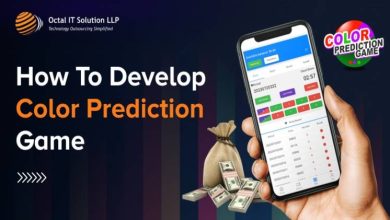Mastering the Spectrum: Techniques for Winning in Color Prediction

In the vibrant realm of color prediction, mastering the spectrum is a skill that transcends artistic endeavors and finds applications in diverse fields such as design, marketing, and even gaming. The ability to accurately predict and understand color combinations not only enhances visual aesthetics but also plays a crucial role in creating impactful and memorable experiences. In this article, we will delve into techniques that can help you master the spectrum, providing valuable insights for both beginners and seasoned professionals.
Understanding Color Theory:
To excel in color prediction, it is essential to grasp the fundamentals of color theory. The color wheel, a visual representation of colors arranged by their chromatic relationship, serves as a guide for creating harmonious color palettes. Primary colors (red, blue, and yellow), secondary colors (green, orange, and purple), and tertiary colors form the basis of this theory. Complementary, analogous, and triadic color schemes are tools derived from the color wheel, aiding in the prediction of aesthetically pleasing combinations.
Psychology of Colors:
Beyond the technical aspects, understanding the psychology of colors is pivotal in predicting the emotional impact of different hues. Colors evoke specific feelings and associations, influencing the way we perceive and react to visual stimuli. For instance, warm colors like red and orange tend to convey energy and passion, while cooler tones like blue and green evoke calmness and tranquility. By incorporating color psychology into predictions, one can create designs that resonate with the intended audience on a deeper level.
Technology and Color Prediction:
Advancements in technology have brought about innovative tools and software that streamline the color prediction process. Machine learning algorithms can analyze vast datasets of color combinations, identifying patterns and trends to assist designers in making informed decisions. Applications like Adobe Color Wheel and Coolors provide instant color schemes and predictions based on user input, making it easier for professionals to experiment with different combinations and refine their choices. Additionally, the emergence of cutting-edge technologies has given rise to exciting developments such as the big Mumbai game, which further enhances the creative landscape by introducing interactive and collaborative elements into the color selection process. This gamified approach not only adds an element of fun and engagement but also fosters a dynamic environment for designers to push their creative boundaries.
Cross-Disciplinary Applications:
The mastery of color prediction extends beyond the realm of design. In marketing, understanding the psychology of colors allows businesses to strategically select hues that resonate with their target audience, enhancing brand recognition and consumer engagement. Additionally, in fields like gaming, predicting the impact of color schemes on user experience can significantly elevate the immersive quality of virtual environments.
Experimentation and Iteration:
One of the most effective ways to master the spectrum is through hands-on experimentation and iteration. Designers and creatives should not shy away from exploring unconventional color combinations and pushing the boundaries of traditional color theories. Embracing trial and error fosters a deeper understanding of the spectrum and hones the intuition needed for successful color prediction.
Conclusion:
Mastering the spectrum in color prediction is an art and science that intertwines technical knowledge, psychological understanding, and creative intuition. By delving into color theory, considering the psychology of colors, leveraging technology, and embracing cross-disciplinary applications, individuals can elevate their ability to predict and utilize colors effectively. In a world where visual communication is paramount, honing these skills opens doors to endless possibilities for creating impactful and visually stunning experiences across various domains.





